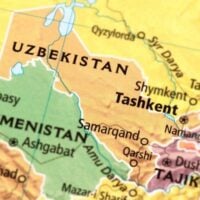Deadline: 14-Nov-22
The U.S. Forest Service is seeking applications for its Great Lakes Restoration Initiative Forest Restoration.
The U.S. Department of Agriculture, Forest Service (Forest Service) anticipates receiving funds to support competitive projects that implement strategic, priority actions within Forest Service authorities to restore, protect, and maintain the Great Lakes ecosystem. Successful projects will implement reforestation and other forest restoration activities to address invasive species, nonpoint source pollution impacts on nearshore health, and habitat restoration in coastal and riparian areas.
The interagency Great Lakes Restoration Initiative (GLRI) targets improvements to address the most significant environmental problems within the Great Lakes Basin.
The Great Lakes Restoration Initiative (GLRI) was launched in 2010 to accelerate efforts to protect and restore one of the largest systems of fresh surface water in the world—the Great Lakes. As one of 16 GLRI regional working group members, the U.S. Forest Service awards competitive grants to assist organizations and communities who are taking creative approaches to improve habitats and water quality.
Areas
- Mitigate Forest Insect and Disease Impacts – Implement targeted reforestation and forest protection actions to minimize invasive forest insect and disease impacts on watersheds.
- Reduce Runoff from Degraded Sites through Green Infrastructure – Capture or treat stormwater runoff by planting trees and other vegetation as an integral component of green infrastructure.
- Restore and Connect Coastal and Riparian Forest Habitats – Protect, restore, and enhance high-quality coastal zone and connecting riparian ecosystems where trees are an important component.
Priorities
-
Mitigate Forest Insect and Disease Impacts:
- Suppress insect and disease threats with a high risk of damage across Great Lakes forests and watersheds;
- Minimize insect and disease impacts where tree damage and mortality pose a particularly high risk to hydrologic function and ecosystem integrity in a watershed;
- Align with State and/or Federal initiatives and strategies for non-native invasive forest pests, showing a high probability of success based on scale and best practices; or
- Increase environmental justice through integrated programs for insect and disease resilience, equitable environmental benefits, and improved quality of life.
-
Reduce Runoff from Degraded Sites through Green Infrastructure:
- Increase capacity, expertise, and engagement in maintaining community trees, particularly in underserved communities;
- Leverage existing modeling or other green infrastructure planning to plant trees in areas that will maximize filtration of overland flow;
- Improve infiltration through practices such as converting turf to native plantings, amending soil, or removing impervious surfaces in planting areas to improve green infrastructure connectivity; or
- Restore riparian and floodplain tree canopy cover in these GLRI agricultural priority watersheds: Lower Fox River, Saginaw River, Maumee River, Genesee River.
-
Restore and Connect Coastal and Riparian Forest Habitats:
- Leverage or protect previous GLRI coastal wetland investments;
- Contain priority coastal habitats identified in Lakewide Action and Management Plan (LAMP) documents and State Forest Action Plans; or
- Enhance habitat quality and connectivity in important waterbird/waterfowl habitats, or for other GLRI priority species
Funding Information
- Estimated Total Program Funding: $4,150,000
- Award Ceiling: $300,000
- Award Floor: $50,000.
Eligibility Criteria
- State agencies, Tribal communities, nonprofit organizations, educational institutions, and local governments are eligible for GLRI funding in all Program Areas. Projects must be located within the Great Lakes Basin of Minnesota, Wisconsin, Michigan, Illinois, Indiana, Ohio, Pennsylvania, and New York.
- Eligible applicants are encouraged to consult with their appropriate State Forester, Tribal administrator (for federally recognized Tribes), or Forest Supervisor (for work near National Forests) to develop and submit applications. The Great Lakes watershed is defined as those areas within the United States that currently or historically drain into Lake Superior, Lake Michigan, Lake Huron, Lake Erie, or Lake Ontario, or drain into the St. Lawrence River west of where the International Boundary line leaves the river.
- All proposed projects must lie entirely within the Great Lakes watershed of the United States.
- Projects must address the purpose of one of the three Program Areas, and may apply for consideration under only one of those Program Areas.
- No matching funds are required.
- Costs must be allowable and budgeted in accordance with the OMB Uniform Guidance.
- Projects must not include construction (capital improvements of facilities or infrastructure) as Federal costs.
- Only non-Federal applicants may apply under this opportunity. Projects must take place on non-Federal lands, except as allowed in Program Area 1, Insect and Disease.
- Applications should include sufficient detail to demonstrate the applicant has the capacity to achieve stated objectives in a timely manner.
- Ownership of the property where grant activities occur must be clear. Letters of support are required from identified partners that own or maintain the project area. Describe how permission will be obtained if work spans mulitple properties not owned by the applicant or current partners.
- Letters are recommended from State agencies or other partners that make substantive commitments towards project planning or implementation.
- Projects involving insect and disease prevention, detection surveys, eradication, or suppression of insect and disease outbreaks are required to:a.be developed in coordination with USFS and/or state agency forest health specialists. Contact the appropriate forest health specialist ( see f orest health specialist staff list) to discuss technical review and coordination needs for the project; b.attach a Forest Pest Treatment form with additional information about methods, outcomes, and environmental benefits and risks.
-
Projects using Forest Health Protection (FHP) authorities for insect or disease activities should follow these guidelines:
- Show strong potential for meeting project objectives and must be supported by a biological evaluation that substantiates the need for the project and the strategies proposed.
- Be environmentally acceptable and appropriately documented in accordance with appropriate laws.
- The entity having ownership or jurisdiction over the affected land must consent, cooperate, and participate in the project; contribute directly to the work to be done; and have the legal authority to carry out such projects.
- Planting projects must avoid installing any state-listed invasive species, including invasives listed as “restricted”, “pending further review”, “non-restricted”, on a watch list, etc.
For more information, visit Grants.gov.
For more information, visit https://www.grants.gov/web/grants/view-opportunity.html?oppId=339879









































